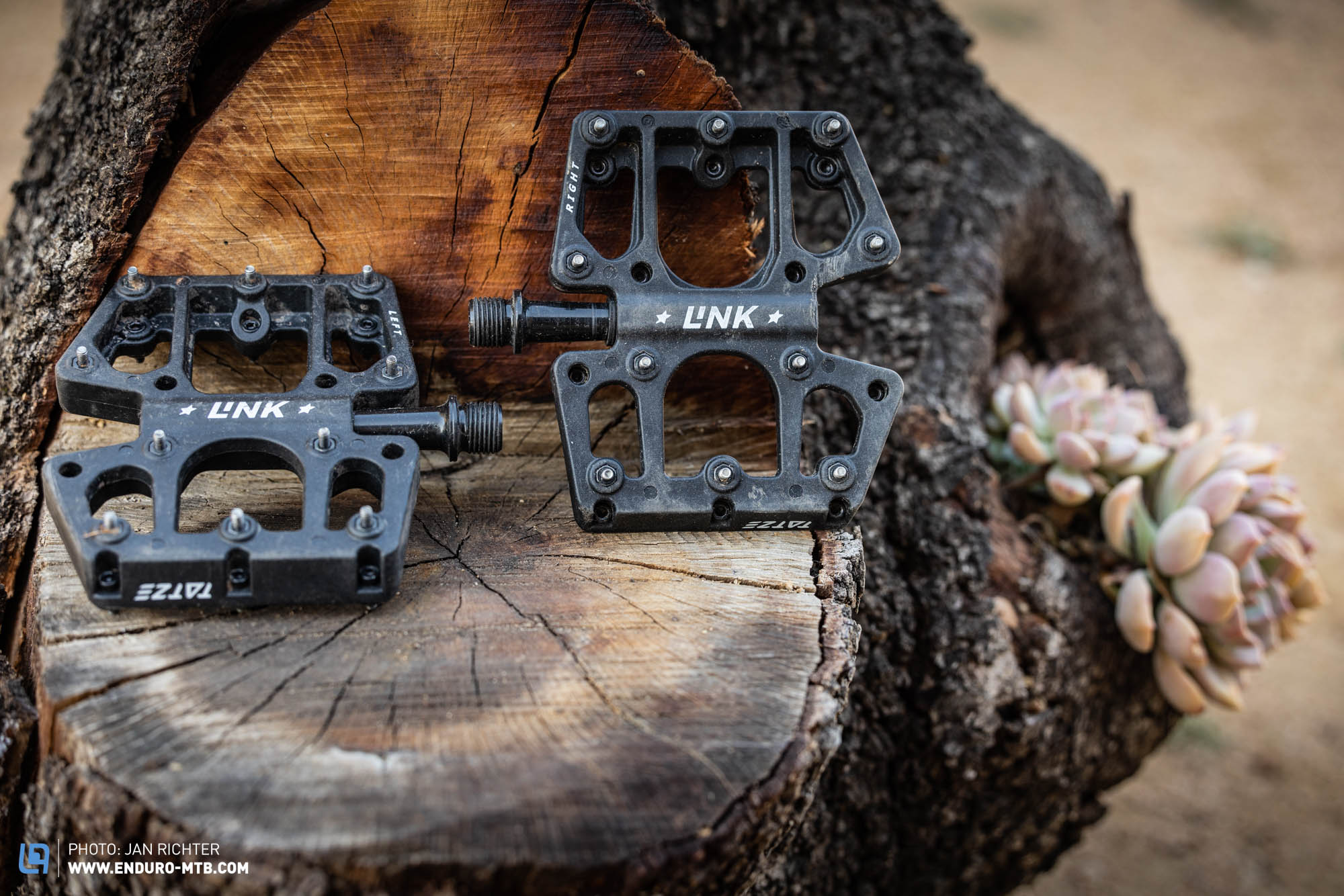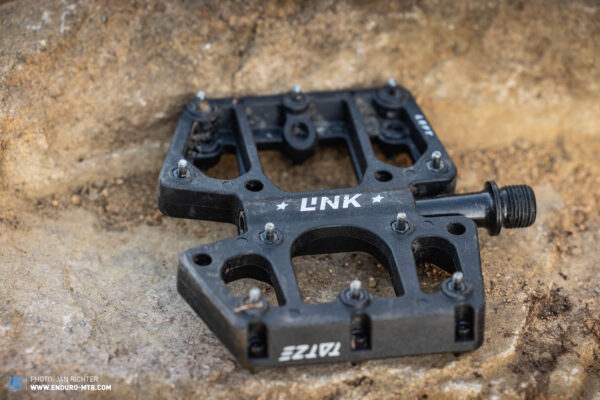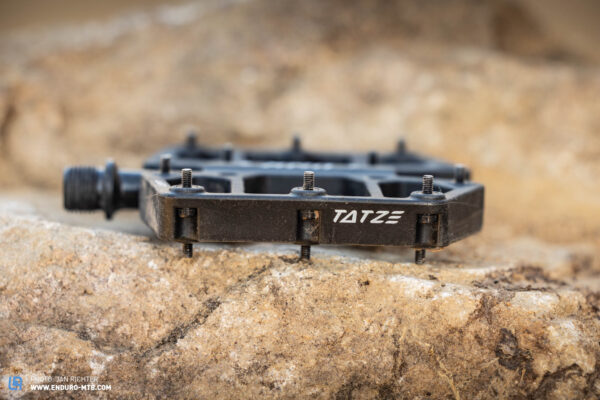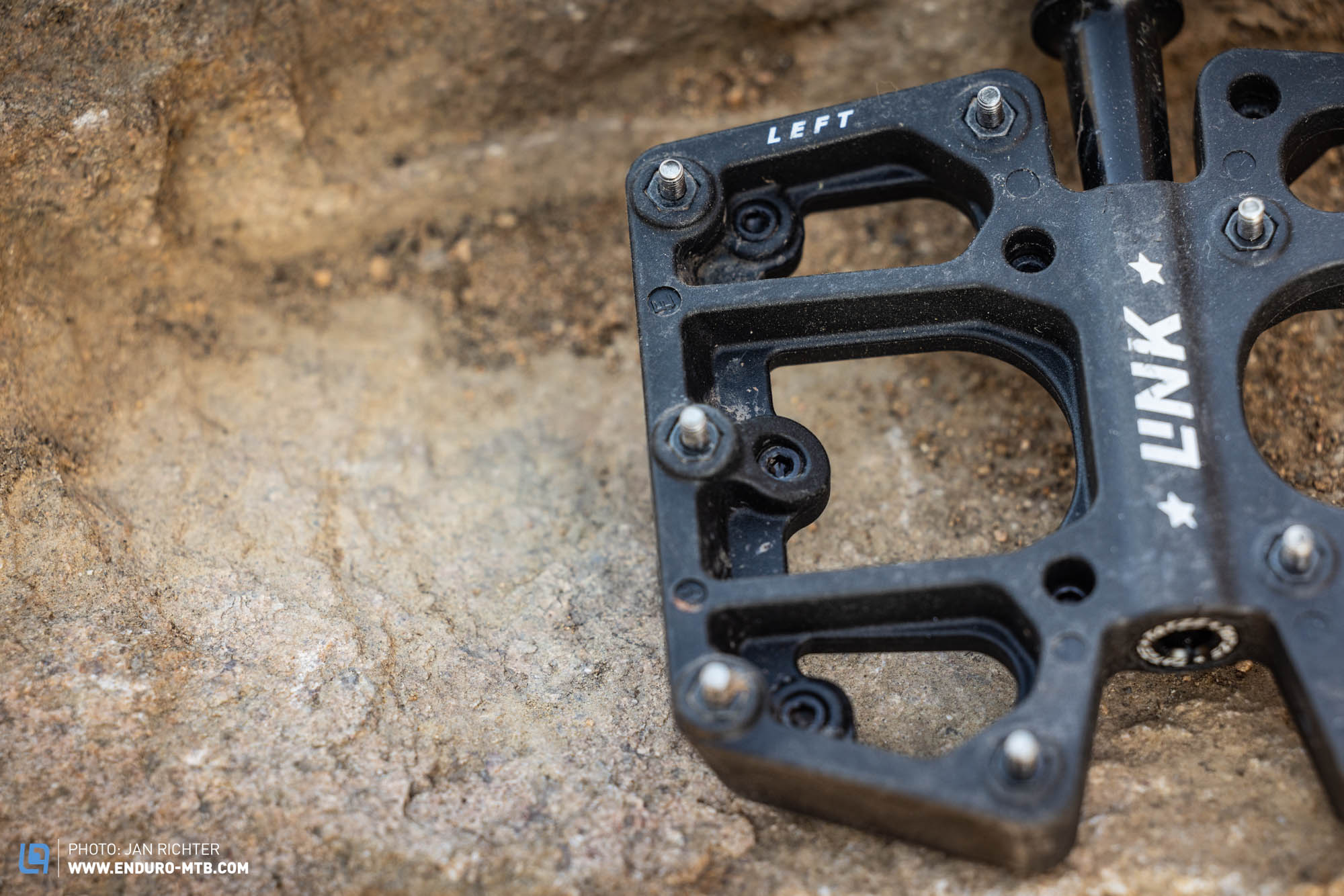TATZE LINK Composite – Put to the test in our big pedal shootout 2023
TATZE are a small brand from Austria that specialise in contact point components. They’re known for producing grips and pedals that stand out from the crowd. But how do the LINK Composite pedals perform in our group test?

Number of pins 10 | Pin insertion below | Manufacturer’s website
The first thing you’ll notice is the unusual shape of the TATZE LINK Composite pedals. As the name suggests, they’re made of composite material. The same pedals are also available in aluminium and titanium. While they end up midfield in the entire test field with a price of € 89.00, they’re still the most expensive composite option. Weighing in at 356 g, they’re among the lightest pedals we tested – only the featherweights from LOOK are lighter. The LINK Composite have 10 pins per side, which – as with all composite pedals on test – each get screwed in from below and are held in place with the help of recessed nuts. This makes it easy to replace pins with the supplied spare pins in case they bend or break. Measuring just 99 mm wide, the TATZE are the narrowest pedals on test. To maintain the bearings, the pedals can be easily opened with a 6 mm Allen key and a narrow 8 mm socket that will fit into the small opening to remove the axle.


The TATZE LINK Composite pedals on the trail
If you put your feet on the TATZE pedals, you will quickly find the right position. The platforms are thinner around the axles than the other composite pedals on test, such as the LOOK or SIX-PACK, making them less convex. That said, the concave aluminium pedals still provide more intuitive foot positioning. Due to the narrow platforms, the pedals provide a relatively narrow stance. For riders with wide feet or hips, this can feel a bit uncomfortable. That said, none of the composite pedals on test were as grippy as the TATZE and, apart from the smaller platforms, they’re nearly on par with the aluminium Crankbrothers model. Your feet stay securely in place, but you can still reposition them easily enough. If you want maximum grip and prefer having your feet stuck to the pedals like they’re glued down, you’ll be better served with the Chromag or Nukeproof pedals. One flaw of the LINK Composites is poor self-cleaning – the pedals quickly pack up with dirt and mud due to the lack of large cut outs in the platforms.

The LINK Composite pedals clearly stand out from the crowd in terms of looks. While they’re the most expensive composite pedals on test, they have a lot to offer: the TATZE are easy to disassemble and generate the most grip of all composite pedals in the test field. You don’t feel like your feet are glued down and can reposition them if needed. However, due to the lack of large cut outs, they have poor self-cleaning, and the stance width of the platforms is too narrow for tall riders.
Tops
- outstanding grip
- easy to service
Flops
- poor self-cleaning
- too narrow for some riders
You can find out more about at tatze-bike.com
Click here for an overview: The best pedals for mountain bikers
all pedals in Review: Acros Clipless Pedal | Crankbrothers Mallet E LS | Hope Union | HT T2 | Shimano XT PD-M8120 | TIME SPECIALE 12 | Chromag Dagga | Crankbrothers Stamp 7 | Hope F22 | Look Trail Fusion | Nukeproof Horizon Pro Sam Hill | OneUp Composite Pedal | Race Face Atlas | Sixpack Kamikaze RA | SQ Lab 50X | Tatze Link Composite |
